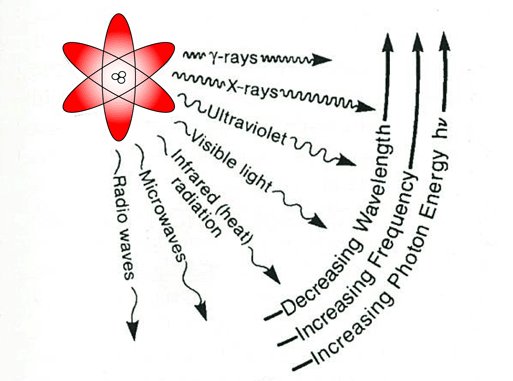
What is Ultraviolet A wave (UVA)?
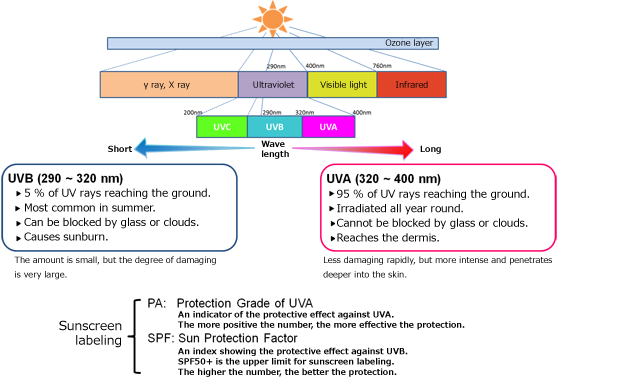
Effects of ultraviolet rays on the skin.
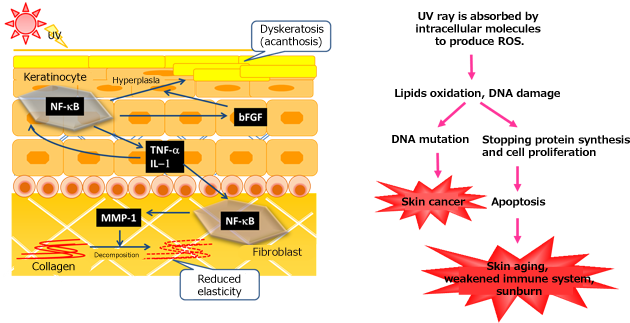
Is UVB more harmful to the skin than UVA?
UVA had been thought to be less harmful to skin than UVB. However, it is known that bioactive substances and reactive oxygen species are produced in skin exposed to UVA, causing inflamatory reactions and DNA damage.
1. Involvement of TRP channels in the cellular response to UVA irradiation.
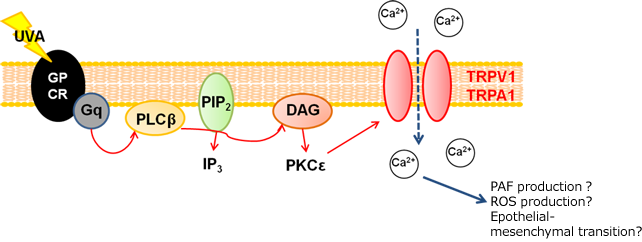
Do cell membrane proteins (receptors / ion channels) respond to UVA?
TRP channels are cation channels that are activated by various stimuli such as temperature changes,
mechanical stimuli, osmotic changes, pain, pH changes, and oxidative stress, and function as sensor proteins in cells.
Since it has been reported that UV exposure activates TRP channels via G protein-coupled receptors,
we are investigating how the activation of TRP channels is related to the prduction of inflammatory substances
that contribute to skin disorders.
2. Involvement of ATP signaling in the cellular response to UVA irradiation.
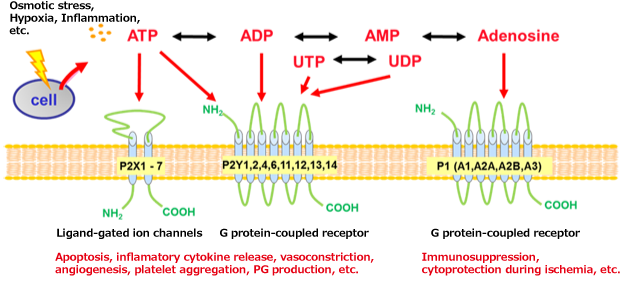
ATP as a signaling molecule
ATP is involved in a number of energy metabolism as an energy donor for living organisms.
The signal transduction system involving nucleotides such as ATP and P2 receptors is called ATP signaling.
It has been unclear whether this ATP signaling system is involved in the skin damage induced by UVA exposure.
A) searching for a novel mechanism of photoaging by targeting ATP and its receptors.
Is ATP signaling involved in skin photoaging?
The aging of the skin caused by prolonged exposure of ultraviolet rays (especially UVA) is called photoaging. The onset and progression mechanisms of this photoaging are comples.
In order to find factors that regulate photoaging, we are searching for new pathogenic mechanisms of photoaging.
As a result, we found that UVA exposure causes release of ATP to the extracellular space through several channels and receptors on the cell membrane,
activates P2 receptors, and induces the production of inflammatory cytokines.
B) Involvement of ATP signaling in the mechanism of DNA damage induced by UVA irradiation.
Is ATP involved in UVA-induced DNA damage?
Skin contains various types of cells such as keratinocytes, fibroblasts, mast cells, and Langerhans cells, etc.
Since UVA reaches deeper into the skin than UVB, it may affect blood cells in capillaries.
UVA rarely damages DNA directly, because of hardly absorbed by DNA, but it indirectly damages DNA by producing reactive oxygen species.
Since the sensitivity of cells in skin to UVA is thought to vary depending on the cell type,
we are investigating the involving of ATP signaling in UVA-induced DNA damage and subsequent cellular responses, such as repair and cell death,
using model cells of various types in skin.
